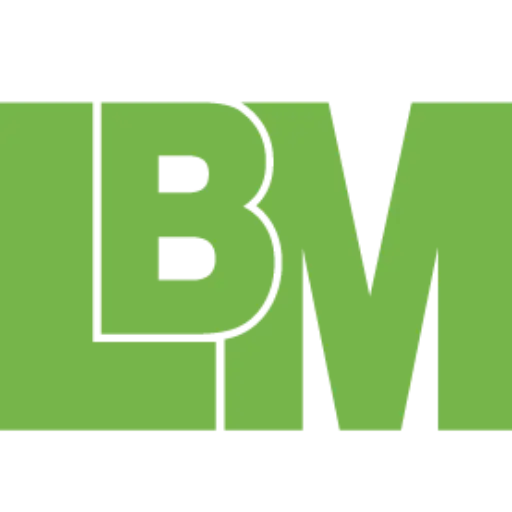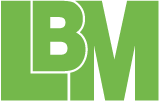- Mon - Fri: 8.30 AM - 5:00 PM
- 26565 Agoura Rd., 200, Calabasas, CA 91302
- 818-884-8075

Average Price of Bankruptcy Leads for Law Firms
Legal Terms Explained: Average Price of Bankruptcy Leads
The average price of bankruptcy leads is $50 to $300 per lead. Chapter 7 leads usually cost $75–$150, and Chapter 13 leads range from $100–$200.
Exclusive leads cost more because only one attorney receives them, while shared leads provide a lower-cost entry point.
Additionally, pricing depends on lead quality, exclusivity, and location. Therefore, attorneys must balance lead cost with conversion potential and expected case value. As a result, firms can budget wisely and improve ROI.
Finally, this guide breaks down pricing, cost drivers, and evaluation strategies for Chapter 7 and Chapter 13 lead programs.
Cost Factors Determining Bankruptcy Lead Prices
Several variables directly impact the average price of bankruptcy leads attorneys pay. Lead exclusivity represents the primary cost driver—exclusive leads sold to one attorney cost 200–400% more than shared leads.
Also, pricing increases in big cities. Markets like Los Angeles, New York, and Chicago may reach $200–$300 per lead, while smaller cities average $50–$100.
Lead quality metrics including contact verification, debt level qualification, and immediate filing intent justify higher prices. Bankruptcy attorneys purchasing leads with verified phone numbers, email addresses, and specific debt amounts exceeding $25,000 typically pay $150-$250 per contact. Real-time delivery greatly increases value. Leads delivered within 5 minutes convert at 21%, compared to only 7% for leads older than 24 hours.
Chapter type influences bankruptcy lead costs considerably. Meanwhile, Chapter 7 liquidation leads typically average $75–$150 because they resolve faster and involve simpler filing processes. Chapter 13 wage earner leads cost $100-$200, reflecting longer case timelines, payment plan complexities, and higher attorney fee potential ranging from $3,500 to $6,000.
Lead Quality Benchmarks
Overall, premium bankruptcy leads exhibit specific characteristics that justify higher acquisition costs. Qualified leads usually involve people with more than $15,000 in debt, active collections, and plans to file within 30 days. Contact verification through dual-channel confirmation (phone and email) increases lead prices by $25-$50 but improves conversion rates from 8% to 15%.
For example, intent signals distinguishing high-value leads include bankruptcy calculator usage, Chapter comparison page visits, and exemption worksheet downloads. Attorneys paying $200+ for exclusive leads should expect consumer pre-qualification, including income documentation, asset inventories, and creditor lists indicating serious filing consideration.
Options Compared: Shared Versus Exclusive Lead Pricing
Shared bankruptcy leads typically cost $15 to $60 and are distributed to multiple attorneys.
As a result, firms benefit most when they have fast follow-up systems, since contacting prospects within 5 minutes captures 78% of conversions.
Additionally, shared lead strategies require robust CRM systems, automated workflows, and dedicated intake staff.
In most cases, Exclusive bankruptcy leads cost $100–$300 and go to only one attorney. This removes competition and increases the chance of signing the client. Firms investing in exclusive leads benefit from consultative sales approaches, thorough case evaluation, and relationship-building strategies. Exclusive leads convert at 18–25%, compared to 6–12% for shared leads. The higher conversion rate explains the premium pricing.
Semi-exclusive leads go to only 2–3 attorneys and cost $75–$125. This option provides a balanced middle ground. These arrangements balance cost management with competitive advantages, particularly effective in markets with moderate bankruptcy filing volumes.
ROI Calculations for Lead Investments
To begin, bankruptcy attorneys must evaluate lead costs against case economics. Chapter 7 cases generating $1,500-$2,500 in attorney fees require lead conversion rates of 12% at $150 per lead to achieve 3:1 ROI. Chapter 13 cases produce $3,500–$6,000 in fees. As a result, firms can pay $200–$250 per lead and still maintain a strong 4:1 return at a 15% conversion rate.
To improve results, effective lead management includes fast response times (under 5 minutes), multi-touch follow-up sequences (7–10 contacts), and lead scoring systems that prioritize high-intent prospects. Attorneys tracking cost per acquisition, conversion rates by source, and lifetime client value make data-driven decisions optimizing bankruptcy lead investments.
Attorney Advantages: Strategic Lead Buying Approaches
Successful bankruptcy firms use a tiered lead strategy across several channels. Allocating 60% of budgets to proven exclusive lead sources, 25% to semi-exclusive opportunities, and 15% to shared leads for volume testing creates diversified pipelines. Moreover, seasonal bankruptcy filing patterns—peaking in January, April, and September—justify increasing lead purchases during high-intent periods.
Additionally, vendor performance evaluation requires tracking lead-to-consultation rates, consultation-to-retention percentages, and source-specific ROI. Attorneys should negotiate volume discounts, test small lead batches before commitments, and establish quality guarantees requiring lead replacement for invalid contacts or unqualified consumers.
Key Insights Summarized: Maximizing Bankruptcy Lead Value
The average price of bankruptcy leads reflects quality, exclusivity, and market dynamics requiring strategic evaluation. Attorneys balancing cost management with conversion optimization achieve sustainable practice growth. Understanding bankruptcy filing trends and consumer rules helps firms stay compliant and focus on qualified prospects. Ultimately, investing in lead management infrastructure, response automation, and systematic follow-up maximizes returns across all pricing tiers while maintaining competitive positioning in local bankruptcy markets.
Join Our Network for Quality Bankruptcy Leads
Legal Brand Marketing connects bankruptcy attorneys with pre-qualified, high-intent leads at competitive rates. Our network delivers verified exclusive and semi-exclusive leads with documented debt levels, immediate filing timelines, and comprehensive consumer information. Join our network to access premium bankruptcy lead opportunities and transform your practice growth strategy today.
Frequently Asked Questions (FAQs)
1. What determines the average price of bankruptcy leads in competitive markets?
Generally, lead exclusivity, geographic competition, consumer qualification level, and delivery speed determine pricing, with metropolitan markets commanding 150–200% premiums over rural areas.
2. How do Chapter 7 and Chapter 13 bankruptcy lead costs differ?
Chapter 7 leads average $75–$150. Chapter 13 leads cost $100–$200 because the filings are more complex and fees range from $1,500 to $6,000.
3. What conversion rate justifies paying premium prices for exclusive bankruptcy leads?
Attorneys should target 18-25% conversion rates for exclusive leads priced at $150-$300 to achieve minimum 3:1 ROI based on average bankruptcy case fees.
4. Are shared bankruptcy leads worth purchasing despite lower conversion rates?
Shared leads at $15-$60 provide cost-effective volume for firms with immediate 5-minute response capabilities and aggressive follow-up systems achieving 6-12% conversions.
5. How can bankruptcy attorneys evaluate lead vendor quality before long-term commitments?
Request small test batches of 10-25 leads, track contact validity rates, measure response rates, and calculate source-specific conversion percentages before volume agreements.
Key Takeaways
Typically, bankruptcy leads range from $50 to $300 depending on exclusivity, quality, and market competition.
In fact, exclusive bankruptcy leads justify premium pricing through 18–25% conversion rates versus 6–12% for shared alternatives.
Meanwhile, Chapter 13 leads cost $100–$200 while Chapter 7 leads average $75–$150 due to case complexity and fee differences.
Additionally, strategic lead buying combines exclusive, semi-exclusive, and shared sources to build a diversified pipeline.
Ultimately, achieving a 3:1 ROI requires fast response workflows, multi-touch follow-ups, and data-driven vendor evaluation.




